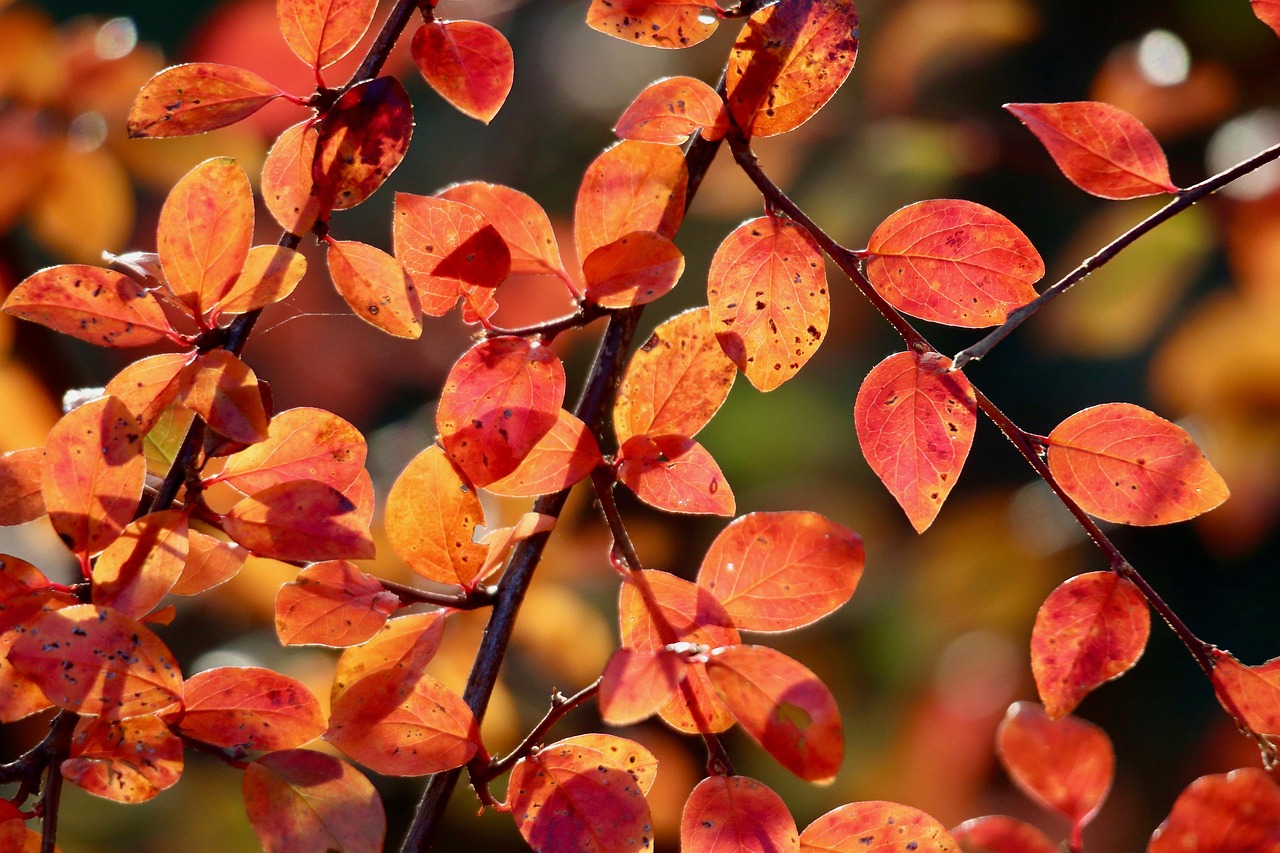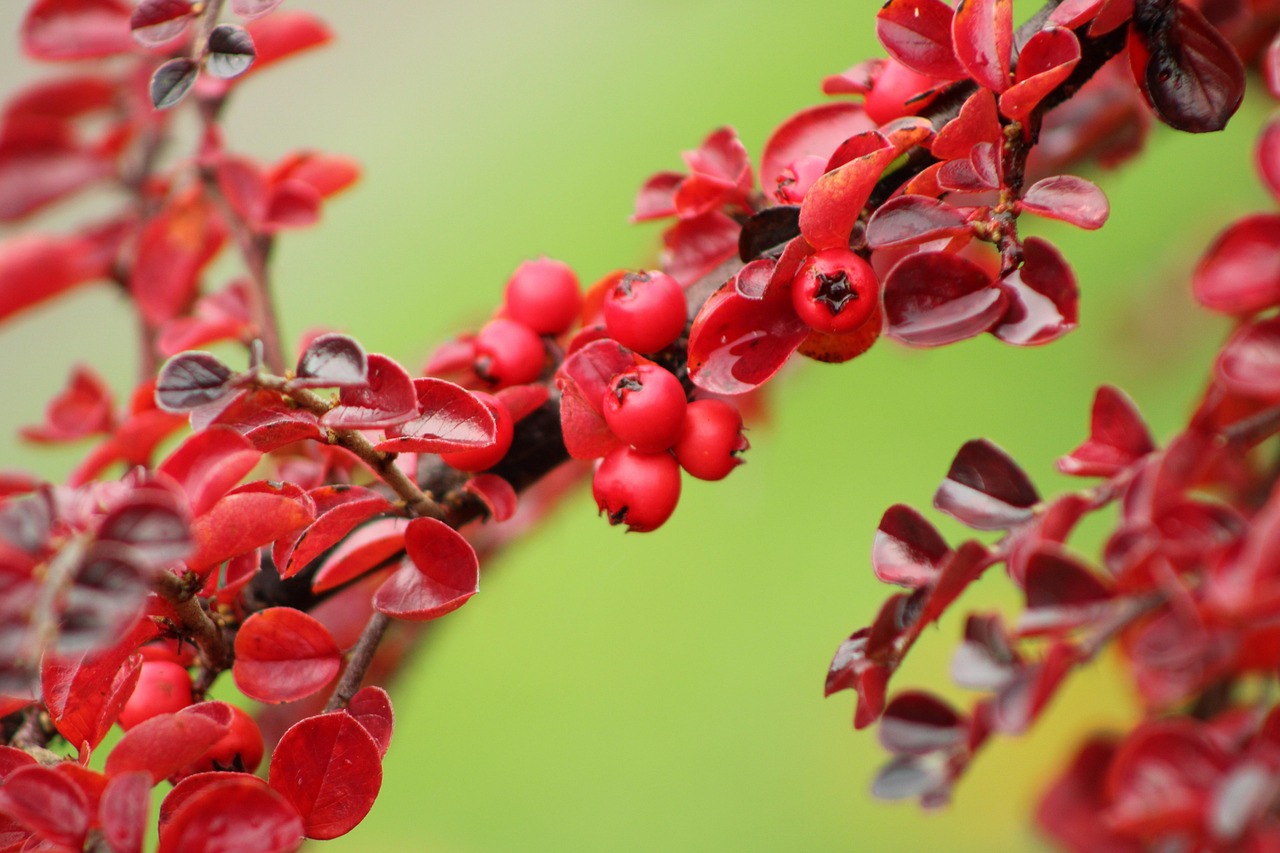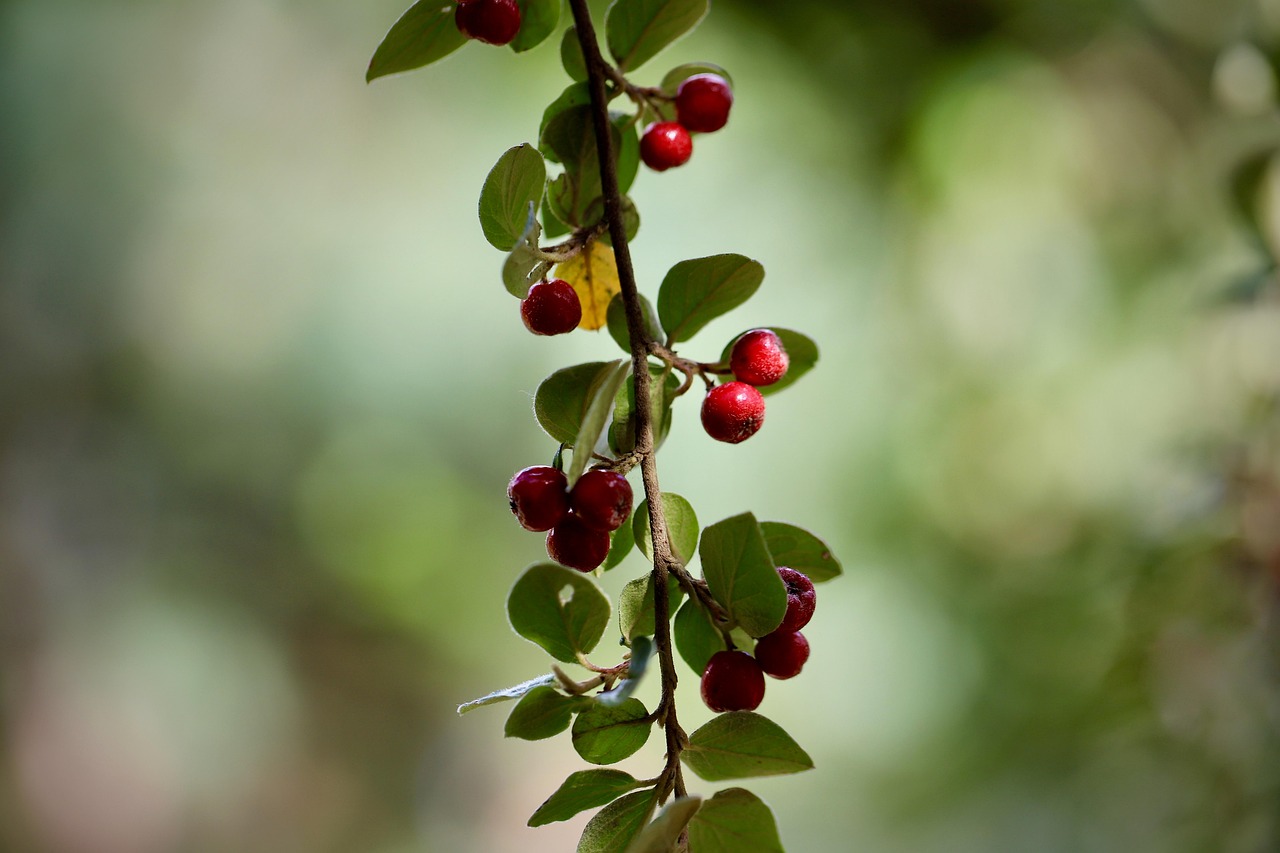Cotoneaster tree pruning involves careful cutting to remove dead or diseased branches, promote airflow, and encourage healthy growth. Proper timing and technique enhance the plant’s aesthetics and overall health.
Cotoneaster is a popular choice among gardeners and landscapers due to its attractive foliage and ability to adapt to various environments. This versatile shrub or small tree can thrive in a range of soil conditions and climates. However, to maintain its beauty and ensure optimal growth, regular pruning is essential. Pruning not only enhances the tree’s shape but also helps prevent disease and pests.

Understanding the basic principles of pruning Cotoneaster can lead to a healthier plant. The right pruning techniques can improve air circulation, allowing sunlight to reach all parts of the tree. This promotes even growth, reduces the risk of fungal infections, and enhances the overall health of the tree.
Understanding Cotoneaster
Cotoneaster belongs to the Rosaceae family and is native to Asia and Europe. There are various species of Cotoneaster, each with unique characteristics. Common varieties include:
- Cotoneaster horizontalis
- Cotoneaster dammeri
- Cotoneaster franchetii
These species can vary in size and growth habits, making it essential to understand the specific needs of the variety you are working with. For instance, some Cotoneaster types grow as ground cover, while others can reach heights of up to 10 feet.

Benefits of Pruning Cotoneaster
Pruning Cotoneaster provides several benefits that contribute to the overall health of the plant:
- Improved Air Circulation: Regular pruning helps eliminate overcrowded branches, allowing air to flow freely through the canopy.
- Enhanced Light Penetration: By removing excess foliage, sunlight can reach lower branches, promoting even growth throughout the tree.
- Healthier Growth: Removing dead or diseased branches prevents the spread of pests and diseases.
- Aesthetic Appeal: Pruning helps maintain a pleasing shape and encourages fuller foliage.
With these benefits in mind, it is crucial to know when and how to prune your Cotoneaster effectively.
When to Prune Cotoneaster Trees
The timing of pruning plays a significant role in achieving the desired results. The best time to prune Cotoneaster is during late winter or early spring before new growth begins. This timing allows the tree to heal quickly and encourages robust growth as temperatures rise.

However, light pruning can be done throughout the growing season. If you notice any damaged or diseased branches during summer, it is advisable to remove them immediately. This practice helps maintain the health of the tree and prevents further issues.
Essential Pruning Tools
Before starting the pruning process, gather the necessary tools for a clean and effective job. Some essential tools include:
- Bypass Pruners: Ideal for cutting small branches.
- Loppers: Suitable for thicker branches that are too large for pruners.
- Saws: Needed for significant cuts on larger branches.
- Gloves: Protect your hands while working.
- Disinfectant: Clean your tools before and after use to prevent disease spread.
Using sharp, clean tools will ensure smooth cuts, reducing stress on the plant and promoting quicker healing.

Pruning Techniques for Cotoneaster
There are several techniques involved in pruning Cotoneaster effectively:
- Remove Dead or Diseased Wood: Start by cutting away any dead or damaged branches. This step is crucial for maintaining plant health.
- Thin Out Overcrowded Areas: Identify areas where branches are crossing or overcrowded. Use your pruners or loppers to cut back these branches to promote better airflow.
- Shape the Tree: Trim back any excessively long or straggly branches. Aim for a balanced shape that enhances the natural form of the tree.
- Encourage New Growth: Cut back a few older stems to ground level to encourage new shoots from the base. This practice helps rejuvenate the tree.
These techniques will help ensure that your Cotoneaster tree remains healthy and visually appealing. As you follow these steps, remember that moderation is key; over-pruning can lead to stress and hinder growth.
Final Considerations
Pruning is a vital part of caring for your Cotoneaster tree. By understanding when and how to prune effectively, you can enhance its beauty and health. The right approach will yield a thriving plant that adds charm to your landscape.
Understanding the Growth Habits of Cotoneaster
To effectively prune Cotoneaster trees, it is important to understand their growth habits. These trees tend to grow vigorously, and their branches can become dense if not managed properly. Recognizing how Cotoneaster grows will help you make informed decisions during pruning.
Cotoneaster trees can have both upright and spreading growth habits, depending on the species. Most grow between three to ten feet tall, with some varieties spreading wider than their height. Knowing these characteristics will guide you in shaping and maintaining your tree’s form.
Growth Patterns and Characteristics
Here are some key characteristics of Cotoneaster growth patterns:
- Branch Structure: Cotoneaster typically has a dense branch structure. The branches can grow close together, leading to overcrowding if not pruned regularly.
- Leaf Production: The leaves are usually small and oval-shaped, creating a lush green canopy in the growing season. In fall, they often turn vibrant colors, adding seasonal interest.
- Flowering and Fruit Production: Cotoneaster produces small flowers in spring, which can develop into bright red or orange berries in the fall, attracting birds and wildlife.
Understanding these growth patterns helps you anticipate how your Cotoneaster will develop over time. This knowledge is crucial for planning effective pruning strategies.
Essential Pruning Techniques for Different Species
While the general pruning techniques apply to all Cotoneaster species, some may require specific approaches based on their growth habits. Below are tailored pruning techniques for common Cotoneaster varieties:
Cotoneaster Horizontalis
This species is known for its low, spreading form. It works well as ground cover but can become overly dense if not managed. Here are some specific pruning techniques:
- Encourage Spreading Growth: Prune selectively to maintain its low profile while allowing it to spread out. Cut back taller stems to encourage horizontal growth.
- Thin Out Branches: Remove overcrowded branches to open up the center of the plant. This allows light to penetrate and promotes healthier foliage.
Cotoneaster Dammeri
This variety is also low-growing but has a more compact habit. Pruning should focus on maintaining its shape while promoting overall health:
- Light Pruning: Conduct light pruning to retain its natural, rounded shape without removing too much foliage. This helps preserve its compactness.
- Control Size: Trim back any excessively long branches to keep the plant from becoming leggy.
Cotoneaster Franchetii
This species tends to grow taller and more upright. Pruning should focus on structure and health:
- Maintain Structure: Remove any weak or crossing branches that may interfere with the tree’s shape.
- Rejuvenation Pruning: Every few years, consider cutting back older branches to promote new growth from the base.
Pest and Disease Management Through Pruning
Pruning not only shapes the tree but also plays a critical role in pest and disease management. A well-pruned Cotoneaster tree is less susceptible to various issues:
- Pests: Overcrowded plants can attract pests like spider mites and aphids. By thinning branches, you reduce hiding spots for these pests.
- Diseases: Fungal diseases often thrive in humid, shaded environments created by dense foliage. Pruning improves air circulation, helping to prevent these issues.
Regularly inspect your Cotoneaster for signs of pests or diseases. If you notice any problems, immediate pruning of affected areas can help contain the issue and protect the rest of the tree.
Aftercare Following Pruning
The steps taken after pruning are just as important as the pruning itself. Proper aftercare promotes healing and encourages new growth:
- Watering: Ensure the tree receives adequate water following pruning. This helps support new growth and aids recovery.
- Mulching: Applying a layer of mulch around the base can help retain moisture and regulate soil temperature.
- Nutrient Boost: Consider applying a balanced fertilizer in early spring after pruning. This provides essential nutrients for vigorous growth.
By following these aftercare practices, you can help your Cotoneaster recover more quickly from pruning and thrive in the growing season.
Common Mistakes to Avoid When Pruning Cotoneaster
Even experienced gardeners can make mistakes when pruning Cotoneaster trees. Being aware of common pitfalls can help you avoid them:
- Over-Pruning: Removing too much foliage at once can stress the tree and hinder growth.
- Poor Timing: Pruning at the wrong time can damage new growth or reduce flowering potential.
- Lack of Planning: Not having a clear plan before starting can lead to uneven cuts and an unbalanced shape.
Avoiding these mistakes will ensure that your Cotoneaster trees remain healthy and vibrant throughout their growing seasons.
Seasonal Care for Cotoneaster Trees
Along with pruning, seasonal care is vital for the health and longevity of Cotoneaster trees. Each season presents unique challenges and opportunities for fostering growth and maintaining appearance. Understanding how to care for your Cotoneaster throughout the year can enhance its vitality.
Spring Care
Spring is a crucial time for Cotoneaster trees as they emerge from dormancy. Here are some essential steps to take during this season:
- Assess Pruning Needs: After the last frost, evaluate the tree for any winter damage and determine if additional pruning is necessary.
- Fertilization: Apply a balanced, slow-release fertilizer to provide essential nutrients as new growth begins.
- Mulching: Add a layer of mulch around the base of the tree to retain moisture and suppress weeds.
These actions will prepare your Cotoneaster for healthy growth throughout the warmer months.
Summer Care
During the summer months, maintaining hydration and managing pests becomes a priority:
- Watering: Ensure consistent watering, especially during dry spells. Cotoneaster prefers well-drained soil but does not tolerate prolonged dryness.
- Pest Monitoring: Regularly inspect for pests such as aphids and spider mites. If you notice an infestation, consider using insecticidal soap or neem oil.
- Deadheading: Remove spent flowers to encourage additional blooming and improve the overall appearance of the tree.
Taking these steps will help keep your Cotoneaster thriving during the heat of summer.
Autumn Care
As autumn approaches, focus shifts towards preparing the tree for winter:
- Final Pruning: Conduct any last-minute pruning before winter sets in, removing any dead or diseased branches.
- Mulch Refresh: Add a fresh layer of mulch to insulate the roots against colder temperatures.
- Watering Adjustments: Gradually reduce watering as temperatures cool, but ensure the tree remains adequately hydrated before winter dormancy.
These practices will help your Cotoneaster transition smoothly into dormancy.
Winter Care
In winter, Cotoneaster trees require minimal intervention but still need attention to prevent damage:
- Protection from Cold: In regions with severe winters, consider wrapping the trunk with burlap or using protective barriers to shield against cold winds.
- Pest Control: Inspect for overwintering pests and take appropriate measures to manage them before spring growth resumes.
- Avoid Heavy Snow Accumulation: Gently brush off heavy snow from branches to prevent breakage.
This seasonal care will help ensure your Cotoneaster trees remain resilient throughout the harsh winter months.
Understanding Soil Requirements for Cotoneaster
The type of soil you use significantly impacts the health and growth of Cotoneaster trees. While they are adaptable, certain soil characteristics can enhance their development.
Soil Type
Cotoneaster thrives in well-draining soil with good aeration. Here are some important factors to consider:
- Texture: A loamy or sandy loam soil is ideal. Avoid heavy clay soils that retain too much moisture.
- pH Level: Cotoneaster prefers slightly acidic to neutral pH levels (between 6.0 and 7.0). Testing your soil pH can help you determine if amendments are necessary.
Soil Amendments
If your soil lacks the desired characteristics, consider making amendments to optimize conditions for your Cotoneaster:
- Add Organic Matter: Incorporate compost or well-rotted manure to improve soil structure and nutrient content.
- Adjust pH Levels: Use lime to raise pH or sulfur to lower it based on your soil test results.
- Aeration: If soil compaction is an issue, consider aerating the soil to enhance drainage and root penetration.
Proper soil conditions will support robust root development and overall tree health.
Pest and Disease Management Strategies
Pest and disease management is essential for maintaining healthy Cotoneaster trees. Understanding common issues can help you take proactive measures.
Common Pests
The following pests often affect Cotoneaster trees:
- Aphids: Small, sap-sucking insects that can weaken plants. Use insecticidal soap or neem oil for control.
- Spider Mites: These tiny pests thrive in dry conditions. Increase humidity around plants or apply miticides if necessary.
- Caterpillars: Various caterpillars may feed on leaves, leading to defoliation. Hand-picking or using Bacillus thuringiensis (Bt) can be effective treatments.
Disease Management
Cotoneaster trees can be susceptible to certain diseases; however, proper care can help mitigate risks:
- Crown Rot: Caused by overwatering or poorly draining soils. Ensure proper drainage to prevent this issue.
- Powdery Mildew: A fungal disease that appears as a white powdery substance on leaves. Improve air circulation through pruning and avoid overhead watering.
By monitoring your trees closely and addressing any issues promptly, you can maintain healthy Cotoneaster trees throughout their life cycle.
Long-Term Maintenance and Care for Cotoneaster Trees
Maintaining the health and beauty of your Cotoneaster trees involves consistent care and attention over the years. Beyond pruning, several practices can contribute to their longevity and aesthetic appeal. Understanding these aspects will allow you to create a thriving environment for your trees.
Regular Monitoring
Regular monitoring is essential for the ongoing health of Cotoneaster trees. Here are some key actions to incorporate into your routine:
- Visual Inspections: Routinely check for signs of stress, such as discoloration, wilting, or unusual growth patterns. Early detection of issues can prevent larger problems.
- Pest Checks: Look for pest activity on leaves and branches. Catching infestations early can make management more effective.
- Soil Assessment: Periodically check the soil moisture and texture. Ensure that it remains well-draining and nutrient-rich.
Being proactive in monitoring allows you to address potential issues before they escalate, ensuring a healthier tree.
Seasonal Adjustments
As seasons change, so do the needs of your Cotoneaster trees. Adjusting care routines throughout the year is important:
- Spring: Focus on fertilization and pruning to promote new growth.
- Summer: Adjust watering schedules based on heat and humidity; monitor for pests actively.
- Autumn: Prepare the trees for winter by mulching and conducting final pruning.
- Winter: Protect trees from harsh weather conditions while limiting excessive moisture.
This seasonal approach ensures that your Cotoneaster receives the right care at the right time.
Companion Planting and Landscape Design
Cotoneaster trees can be effectively integrated into broader landscape designs. Companion planting can enhance their health and visual appeal:
- Selecting Complementary Plants: Choose plants with similar water and light requirements to grow alongside Cotoneaster. Examples include ornamental grasses or low-growing perennials.
- Diversity in Your Garden: Incorporating a variety of plants can create a balanced ecosystem, attracting beneficial insects while deterring harmful ones.
Smart landscape design not only beautifies your space but also fosters a supportive environment for your Cotoneaster trees.
Final Thoughts
Cotoneaster tree pruning is an essential practice that contributes significantly to the health and aesthetic appeal of these versatile plants. By understanding their growth habits, implementing proper seasonal care, and using effective pest management strategies, you can ensure that your Cotoneaster remains vibrant throughout its life.
The key takeaway is that regular maintenance, from pruning to monitoring soil conditions, is crucial for successful gardening with Cotoneaster. Remember that each tree is unique; adapting your care approach based on specific needs will yield the best results.
With commitment, attention to detail, and a proactive approach, you can enjoy the beauty and benefits of Cotoneaster trees in your landscape for many years to come. Embrace the journey of caring for these remarkable trees, and watch as they flourish under your care.
